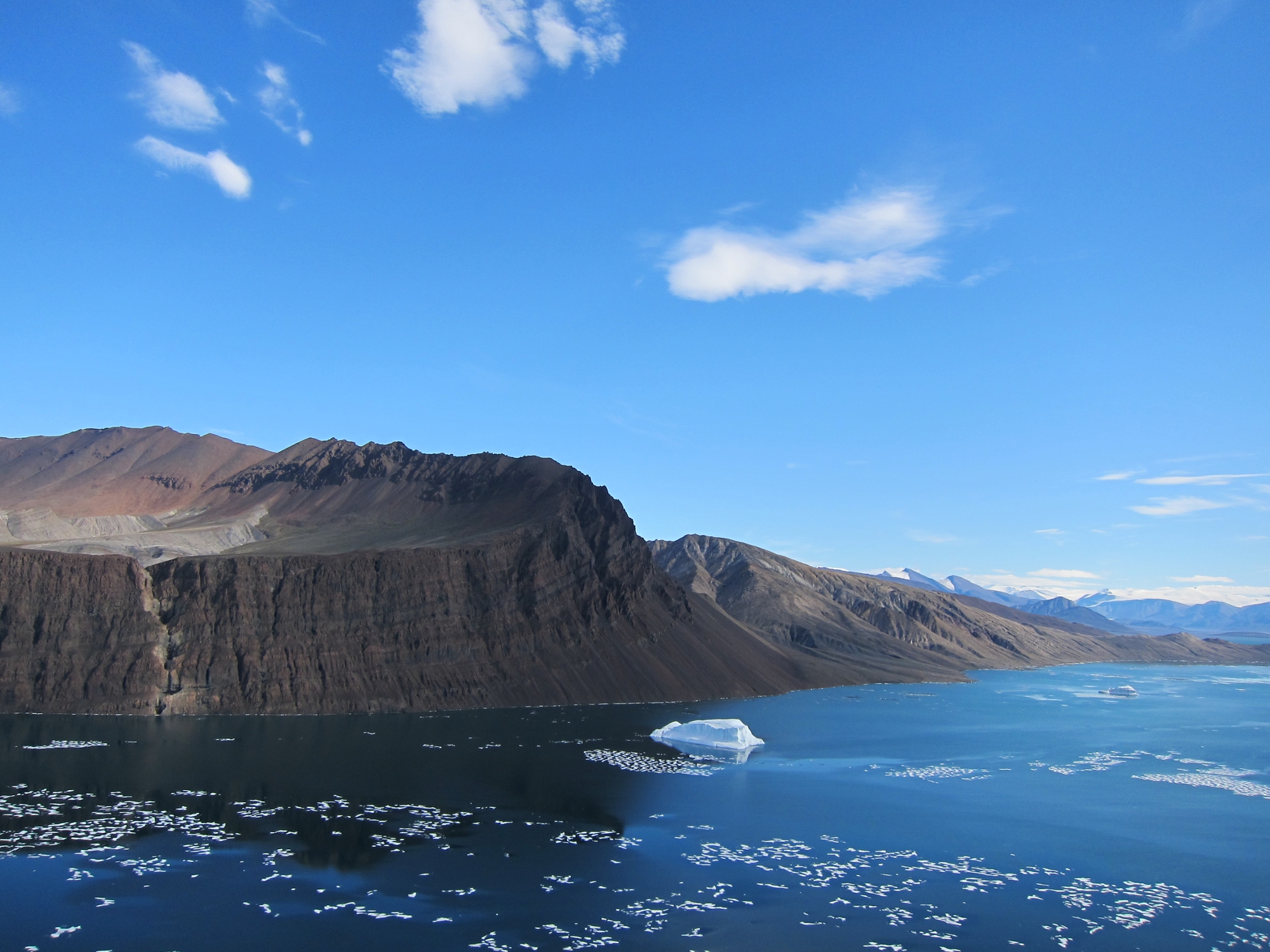Recent Field Work
Arctic Expeditions
Multidisciplinary Investigation of Late Cretaceous and Paleogene Stratigraphic Sequences of the High Arctic
Numerical and laboratory simulations suggest that the dynamics of the geodynamo differ inside and outside the tangent cylinder, that imaginary cylinder parallel to Earth's spin axis and tangent to the solid inner core. The high Arctic provides an ideal opportunity to investigate such processes through the collection of paleomagnetic and paleointensity data from Paleogene to Late Cretaceous volcanic rocks. These rocks are also important for understanding the tectonic evolution of the Arctic Ocean, its margins, the nature the High Arctic (Strand Fiord) large igneous province and the role of mantle plumes in producing High Arctic magmatism. In addition, vertebrate fossils from sedimentary rocks of this age have yielded important polar paleoclimate information. In particular, they define an interval of Turonian extreme climatic warmth, and an Arctic that was likely free of ice.
We are engaged in a multidisciplinary study of these topics linked by a common field approach: high resolution sampling of well-defined high Arctic stratigraphic sections. Volcanic rocks are being sampled for paleomagnetism, geochronology and geochemistry, whereas fossils are being collected to better characterize Late Cretaceous-Paleogene polar temperatures.
Expeditions are led by Professor John Tarduno and involve graduate and undergraduate students. The latest expedition was in 2015, and represents the latest expeditions to the High Arctic region by Professor Tarduno.
Dragon Cliff, Axel Heiberg Island
